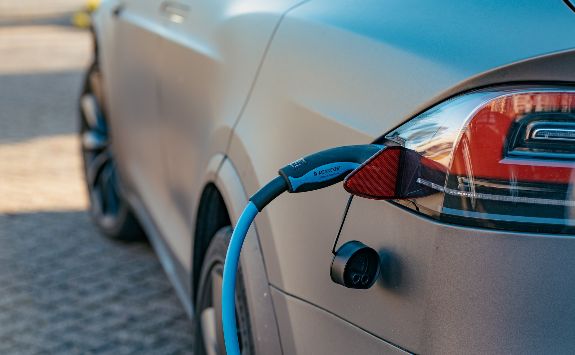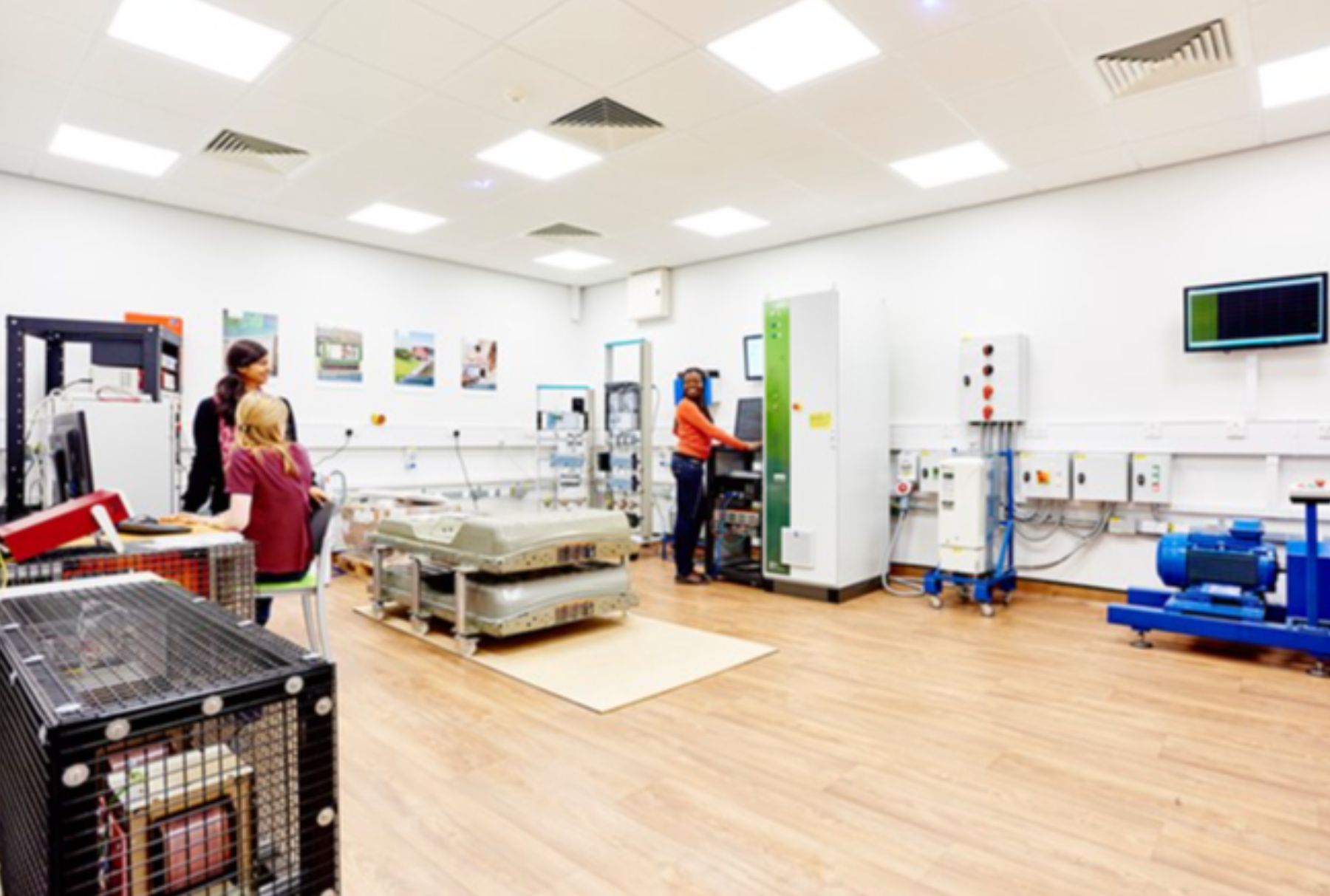Research Theme: Power Systems and Energy Storage
Safe, sustainable, reliable and cost-effective energy for all.
Our innovative research has international impact. We work with academics, industry and policy makers at local, national and international levels.
We deliver solutions in almost every aspect of energy systems integration. We have expertise in areas from storage to distribution, from transmission to end use.

Our facilities
Our Smart Grid Lab and Energy Storage Test Bed are unique grid connected facilities at our Newcastle Helix site. They enable investigation of future energy systems.
Smart Grid Lab
Our Smart Grid Lab focuses on the simulation of distribution networks under future scenarios. An integral part of this system is a real-time network simulator (RTNS). This allows for detailed real-time simulation of networks using sophisticated models. The models can interact with the physical laboratory environment.
Full integration
The RTNS and the control systems platform have full integration with the LV (low voltage) network of the laboratory.
Autonomy
We can operate the smart grid system autonomously. We can de-couple it from the grid. We can even operate it with soft open points between different areas of the LV network using a flexible power converter.
Emulation
Emulated PV and other distributed generators are also integrated into the laboratory system. It also features a set of controllable real and reactive load banks.
Real-time network simulation models
The models can interact with the laboratory via a digital link to a three-phase, four quadrant inverter drive. The drive is capable of delivering fully controllable voltage waveforms and events.
Fully instrumented
The high-speed communications and instrumentation system uses National Instruments and high speed, FPGA based systems.
Smart loads
We have installed smart home appliances such as a smart washing machine and a smart load. There is an EV charge post which enables the charge cycles of real EVs to interact with the systems within the laboratory.
Smart grid control systems
The smart grid network management system features a state estimator and optimised power flow (OPF) technology. The lab also has an energy management software system for micro-grids.
Flexible low voltage grid
The four wire three-phase experimental low voltage AC and DC network enables investigation of AC and DC power systems.
Mathematical methods for energy systems design, planning and operation
Our research is socio-technical. We use mathematical methods to evaluate a series of network management techniques. Our investigations take place in the presence of emerging low carbon technologies, such as:
- electric vehicles
- heat pumps
- solar photovoltaic generation
We work with domestic and commercial consumers at many levels of the distribution network.
Integrated modular energy systems and local flexibility trading for neural energy islands
De-centralising electricity generation requires de-centralised and affordable solutions to:
- integrate more renewable energy sources (RES)
- increase the security of supply
- decarbonise the EU’s energy future
MERLON introduces an Integrated Modular Local Energy Management Framework. The framework provides Holistic Operational Optimisation of Local Energy Systems. These systems include high shares of volatile distributed RES.
Optimisation applies to many levels. It includes optimal coordination of local generation, with demand and storage flexibility. It caters for the flexibility offered by electric vehicles and Combined Heat and Power (CHP) Plants. It facilitates maximum RES integration, avoidance of curtailment and balancing ancillary grid needs.
MERLON is sponsored by the European Commission. It is in response to the Horizon 2020 call Building a Low-Carbon, Climate Resilient Future: Secure, Clean and Efficient Energy.
Evaluating the security contribution of smart network interventions
We are developing tools and methods for planning engineers. They will be better able to make informed decisions about providing security of supply. Security of supply is achieved through a combination of network and non-network assets, including:
- distributed generation
- demand side response
- storage
- the application of transfer capacity
Our method will be rigorous enough to provide robust answers to the problem of security of supply. At the same time, it will be simple enough for use by those without an in-depth knowledge of risk, statistics, probability, and reliability theory. To achieve these two goals, we are using an iterative, data driven approach. We will carry out validation via established risk analysis methods.
Northern Powergrid sponsors the project.
Vehicle grid integration
We have a satellite group based at the Alan Turing Institute in London, led by Dr Myriam Neaimeh. This group is studying Vehicle Grid Integration. They are using data science to modernise transport and electricity infrastructure. They are helping to make the infrastructure sustainable and efficient. At the same time, they are ensuring that the infrastructure maintains reliable operation.
They contribute to open communication protocols and open source software for vehicle grid integration.
They are applying and developing privacy preserving methods for energy demand data. They conduct security analysis to grid-integrated EV charging infrastructure. They assess the security of communication, hardware and software.
The group devises response plans to potential security threats and attacks. They assess new technology pathways to help policy makers make informed decisions.
The project is shared with the wider energy community through a series of free webinars.
An enhanced understanding of network losses
We are developing a detailed and flexible electrical distribution network losses model.
Our model builds on the analysis of present and future network operating scenarios. It incorporates system and consumer data. It considers both ‘smart’ and traditional network operation and management techniques.
The model will demonstrate modularity by integrating a range of additonal user-defined inputs. These relate to actual and/or forecasted network configuarations and operating scenarios.
The model is flexible. It will allow for seamless incorporation of new network data as this becomes available. This will significantly extend the range of outputs that can be generated.
We are working in partnership with Northern Powergrid.
Holistic approaches to multi-energy system analysis
We are investigating the integration of multiple energy vectors at local, regional and national scale. We are examining the value of a whole energy systems approach. A whole systems approach takes into consideration:
- heat
- electricity
- gas
- storage
- transport
- demand and supply technologies
We also investigate system-wide issues. These include complementarity, losses, storage, speed, congestion and carbon.

CESI: Centre for Energy Systems Integration
CESI is a £20m national centre. It is primarily funded by the Engineering and Physical Sciences Research Council (EPSRC) and Siemens.
The Centre brings together energy experts from around the world. Together, we are helping to unravel the energy network. We are increasing our understanding of future supply and demand.
We draw upon the expertise of leading academics from the universities of Newcastle, Heriot-Watt, Sussex, Edinburgh and Durham.
The energy system as a whole comprises:
- gas
- power
- renewables
- transport
- heating
- cooling
The Centre paves the way to a flexible smart infrastructure. This will empower customers and give them greater control of their energy use. It allows industry to meet the tough new low carbon targets.
Providing robust messages about the real world, our aim is to understand how we can:
- optimise the energy network
- drive down customer bills
- inform future government policy
Integrated Smart GRID Cross-Functional Solutions for Optimized Synergetic Energy Distribution, Utilization Storage Technologies
InteGRIDy is funded by the European Commission. It is a partnership between a number of universities, including Newcastle.
InteGRIDy will integrate cutting-edge technologies and mechanisms in a framework of replicable tools. The framework will connect existing energy networks with diverse stakeholders. This will help to provide optimal and dynamic operation of the Distribution Grid (DG). It will:
- foster the stability and coordination of distributed energy resources
- enable collaborative storage schemes within an increasing share of renewables
Newcastle University is involved in InteGRIDy through the pilot case of the Isle of Wight Energy Autonomous Community.
